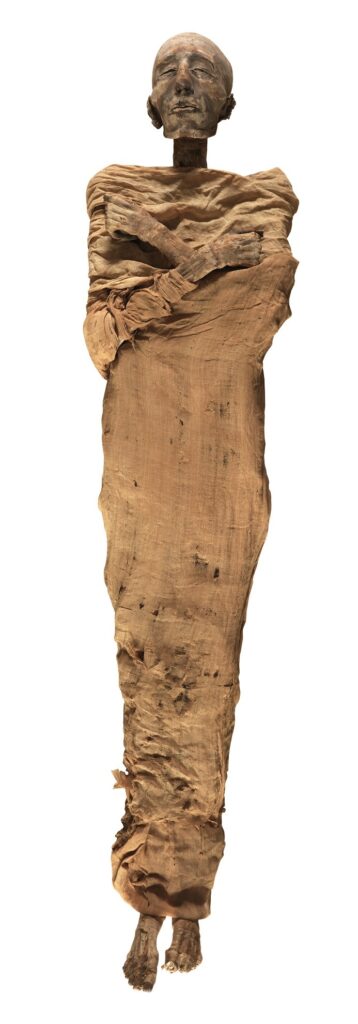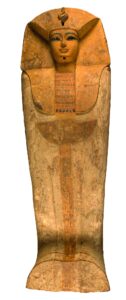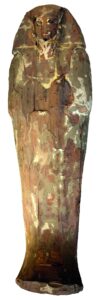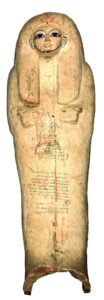Merenptah (Baenre Merinetjeru)
Son of Ramses II and Isetnofret I
New Kingdom, 19th Dynasty

Merenptah was the thirteenth son of Ramses II and his second Great Royal Wife. Due to his father’s very long reign, he ascended the throne at a more advanced age, and ruled for only about 11 years. He was an active king, engaging in a number of military campaigns: he held off a coalition of the Libyans and Sea Peoples that attacked Egypt’s Delta in his fifth regnal year; and put down a rebellion in Nubia. One of the most important artifacts of his time, the “Israel Stela,” contains the first recorded mention of Israel.
KV 8 was Merenptah’s original tomb in the Valley of the Kings, but his mummy was then moved at some point into the tomb of Amenhotep II (KV 35).
Over the course of a 32-year reign, Ramses III fought a number of notable battles and is remembered as skilled in the art of warfare. The first decade of his reign was marked by battles against the Libyans and the Sea Peoples, a result of turmoil and population upheaval in the Mediterranean world. His early years were also occupied with stabilizing Egypt’s internal political situation in the wake of the political confusion of the previous reigns. Ramses III built a great mortuary temple at Medinet Habu, where he recorded his military exploits. Records from this reign reveal a difficult economic situation, exacerbated by the expense of the king’s wars against invaders. One papyrus details the first recorded labor strike, carried out by the royal artisans at Deir elMedina, who had been denied their wages. Despite his great victories and accomplishments, Ramses III fell victim to a plot devised by a minor wife, Tiye, to put her son Pentawer on the throne. Several papyri tell of this “harem conspiracy” to kill the king, which involved various officers, members of the royal harem, and high court officials. It is not clear from the papyri, which record the trials of the conspirators, whether or not the plot succeeded. However, the CT scan carried out by the Egyptian Mummy Project clearly showed that the king’s throat had been cut from behind. DNA analysis also confirmed that Unknown Man E (the “screaming mummy,” also found in the Deir el-Bahari cache) was a son of Ramses III, and could be Prince Pentawer. The king was originally buried in KV 11, the abandoned tomb of his father Setnakht; his mummy was restored by the later priests and eventually moved to the Deir el-Bahari cache.























